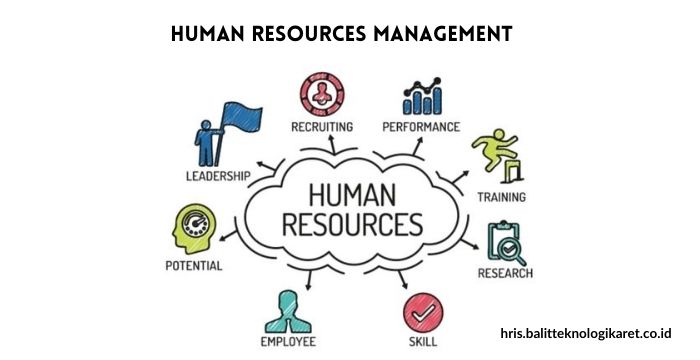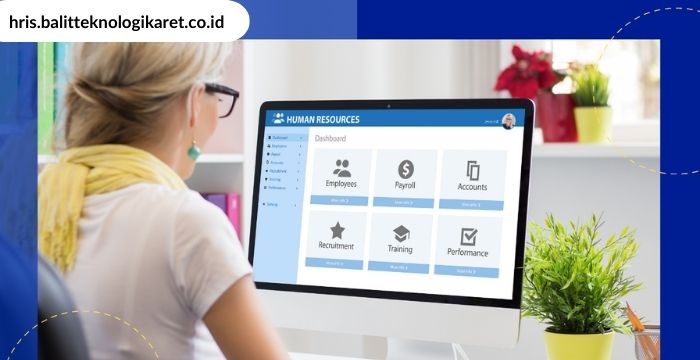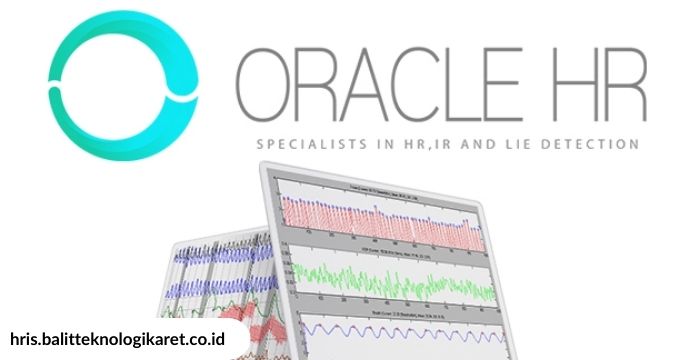Introduction
hris.balitteknologikaret.co.id | Human Resources Management – As a seasoned content writer with a passion for exploring the dynamic field of Human Resources Management (HRM), I’ve had the privilege of delving deep into its intricate web. In this blog post, we’ll embark on a journey to uncover the pivotal role HRM plays in the modern workplace and gain insight into the evolving trends and challenges that shape the HR landscape.

The Crucial Role of Human Resources Management
At the very heart of any successful organization lies the core function of HRM. Think of HRM as the glue that binds a company’s people, policies, and strategies together. It’s the department responsible for orchestrating a harmonious balance within an organization, ensuring that the right people are in the right roles, nurtured for growth, and working within a framework of compliance and legality. In my years of research and writing on HRM, I’ve come to appreciate its multifaceted nature, as it oversees not just HR functions and responsibilities but also navigates a complex web of legal and compliance considerations.
Evolving Trends and Challenges in HR Management
The journey into HRM has been nothing short of fascinating, marked by a keen awareness of the seismic shifts taking place within the discipline. As a content writer, I’ve been privileged to witness how HR professionals are steering their organizations through the digital age. They are adopting cutting-edge technologies to streamline processes, enhance efficiency, and create a more seamless employee experience. The advent of remote and hybrid work models has necessitated a reevaluation of HR strategies, touching upon talent acquisition, engagement, and well-being. Additionally, the growing recognition of diversity and inclusion has ushered in a new era for HR practices, emphasizing their pivotal role in cultivating a thriving and innovative workforce.
As we continue to explore the world of HRM in this blog post, we will delve deeper into its fundamental elements, including HR functions and responsibilities, key HR metrics, and the intricate terrain of legal and compliance considerations. Join me on this comprehensive journey into the realm of Human Resources Management, where insights and practical guidance await for HR professionals and enthusiasts alike.
The Basics of Human Resources Management
HR Functions and Responsibilities
Diving deeper into the realm of Human Resources Management, let’s unravel the intricate tapestry of HR functions and responsibilities. As a content writer navigating this multifaceted field, I’ve discovered that HR professionals are essentially the architects of a thriving workforce. They are responsible for sourcing and nurturing talent, ensuring compliance with labor laws, and fostering a work environment that encourages growth and productivity. From crafting job descriptions that resonate with potential candidates to overseeing employee relations and conflict resolution, HR teams are the backbone of any organization.
Key HR Metrics and KPIs
In the world of HR, data is the compass that guides decision-making. My journey as a content writer has revealed that HR professionals rely on a plethora of metrics and key performance indicators (KPIs) to measure the effectiveness of their strategies. Metrics like employee turnover rate, time to hire, and employee engagement scores provide valuable insights into the health of an organization. These numbers empower HR leaders to identify areas for improvement, optimize recruitment efforts, and enhance overall workforce performance.
Legal and Compliance Considerations
Navigating the legal landscape is an essential facet of HRM. Throughout my career as a content writer, I’ve emphasized the significance of HR professionals staying vigilant about compliance with labor laws and regulations. Mishandling legal matters can lead to severe consequences for both employees and the organization. From wage and hour laws to workplace safety regulations and anti-discrimination statutes, HR must maintain a comprehensive understanding of the legal framework in which they operate. They act as the guardians of fairness and justice within an organization, ensuring that all policies and practices align with the law.
Strategies for Effective Human Resources Management
Talent Acquisition and Recruitment
Recruitment is the first step in building a high-performing team, and HR plays a pivotal role in this process. As a content writer, I’ve explored the innovative strategies that HR professionals employ to attract and retain top talent. From crafting compelling job descriptions to harnessing the power of social media and AI-driven tools for candidate sourcing, HR teams are on the cutting edge of talent acquisition.
Employee Onboarding and Development
Once talent is acquired, effective onboarding and development are essential to unlock their full potential. HR professionals are instrumental in designing onboarding programs that integrate new hires seamlessly into the organization’s culture. Furthermore, they oversee training and development initiatives, ensuring that employees continuously acquire the skills needed to excel in their roles.
Performance Management and Appraisals
In my experience as a content writer, I’ve highlighted the significance of performance management in HRM. This involves setting clear expectations, providing constructive feedback, and conducting regular appraisals. Effective performance management fosters a culture of accountability and growth within an organization.
Employee Engagement and Retention
Finally, employee engagement and retention remain perennial challenges and opportunities for HR professionals. They implement strategies to boost engagement, from creating a positive work environment to recognizing and rewarding top performers. Simultaneously, they craft retention programs to keep valuable talent within the organization’s fold.
Join me as we delve deeper into these critical facets of Human Resources Management, uncovering strategies and insights that can drive HR excellence and organizational success.
HR Technology and Tools
In the ever-evolving landscape of Human Resources Management (HRM), technology is a formidable ally. During my journey as a content writer, I’ve witnessed the profound impact of HR technology and tools on reshaping HR processes. At the heart of this transformation lies the Human Resources Information System (HRIS). This software serves as the digital nerve center of HR operations, streamlining tasks like employee record management, payroll processing, and time tracking. It’s the digital backbone that empowers HR professionals to work more efficiently, freeing them from the shackles of paperwork.
But HRIS is just the tip of the iceberg. Data analytics has emerged as a game-changer in HRM. Today, HR teams leverage data-driven insights to make informed decisions. They analyze workforce metrics, from turnover rates to employee engagement scores, to fine-tune HR strategies. As a content writer, I’ve marveled at how this analytical prowess can transform HR from a reactive department to a proactive force for organizational growth.
The rise of automation and artificial intelligence (AI) in HR management is another revelation. HR professionals now employ chatbots for instant employee queries, use AI-driven tools to screen job applicants, and harness automation for routine tasks, allowing them to focus on strategic initiatives. These technological advancements are not mere conveniences; they represent a paradigm shift in how HR operates.
Addressing Challenges in HR Management
While technology brings remarkable solutions, HR still grapples with multifaceted challenges. One of the most pressing is fostering diversity and inclusion. As a content writer, I’ve explored the strategies employed by HR professionals to create inclusive workplaces that value differences. From unconscious bias training to diverse hiring practices, HR is at the forefront of driving change.
The seismic shift to remote work and the emergence of hybrid workforces have introduced a new frontier of challenges. HR professionals must adapt policies, technology, and practices to ensure that remote employees remain engaged, connected, and productive.
Additionally, the pandemic has brought employee well-being and mental health into sharp focus. I’ve delved into HR initiatives that prioritize the mental health of employees, from offering counseling services to promoting work-life balance.
In this ever-evolving landscape, HRM remains both a challenging and exhilarating field. The intersection of technology, data, and human interaction paints a vivid tapestry of HR’s transformation. As I continue my journey as a content writer, I eagerly anticipate the next breakthroughs and solutions that will shape the future of HR management.
Future Trends in Human Resources Management
As a content writer, one of the most exciting aspects of delving into the world of Human Resources Management (HRM) is uncovering the future trends that promise to reshape this field. In this ever-evolving landscape, staying ahead of the curve is crucial for HR professionals.
Emerging HR Technologies: Technology continues to be the driving force behind HR transformation. The future holds exciting prospects with the proliferation of artificial intelligence (AI) and machine learning in HRM. Predictive analytics will allow HR departments to anticipate workforce needs, identifying potential issues before they arise. Chatbots and virtual assistants will become even more integrated, providing instant support to employees. The possibilities are boundless, and I’ve eagerly followed the innovations that are making HR more efficient and employee-centric.
Shaping HR for the Future of Work: The COVID-19 pandemic accelerated a shift towards remote work and flexible arrangements. As a content writer, I’ve observed how HR professionals have adapted to this seismic change, creating policies and practices that support remote and hybrid work models. In the future, these trends will persist, prompting HR to reimagine the workplace and how it fosters employee engagement, collaboration, and well-being.
Conclusion
In conclusion, the role of Human Resources Management in today’s organizations is more critical than ever. It’s a dynamic field, constantly evolving to address the challenges and opportunities that arise. The value of effective HR management cannot be overstated. It’s the linchpin that ensures organizations can attract and retain top talent, navigate complex legal landscapes, and adapt to the ever-changing world of work.
For HR professionals, the journey is far from over. As you navigate the complexities of HRM, I encourage you to embrace emerging technologies, champion diversity and inclusion, and prioritize employee well-being. By doing so, you’re not just shaping the future of HR, but also contributing to the success and resilience of your organization. So, take the next step in your journey towards HR excellence. Your efforts will undoubtedly define the workplace of tomorrow.

